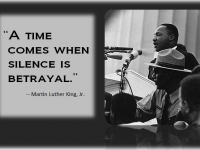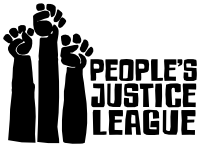
This piece originally ran as a Reader's Forum by our Programming Coordinator, Sarah Fick, in the Athens News on September 2, 2015.
Last year, Webster's word or the year was culture. “Culture” used to have a positive connotation, but today, it's more often used to describe the negative impacts it has on us. Webster's explanation for their choice included a reference to high rates of on-line searches for the term rape culture. I'm glad that last year's feminist activism had people grappling with the meaning of the word, but I'm sad to see a darkness fall over it. I'm writing today to propose a way to take it back, to end rape culture and replace it with a culture of mutual respect and accountability. The term rape culture has been around since the '70's and is used to refer to the culture that encourages male aggression and supports violence against women. Rape culture is pervasive. It's everywhere. Last week, Donald Trump said misogynistic things on national television while trying to win votes and the crowd cheered, OU students hung sexually suggestive banners on their houses as students moved in, and the worldwide epidemic of violence against women continued. Whether you are willing to admit it or not, these things are related. To me, bystander intervention represents one form of community based accountability.
We have a few things to get over before we can become active bystanders. Google bystander effect, and you'll get a handful of videos talking about our brains' natural inclination not to get involved. Add to that our cultural norms of victim blaming and minding our own business and you get heinous stories like the story of Kitty Genovese, which sparked the study of the bystander effect in the first place. I'll spare you the gory details, but when this incident occurred in the late '60's, there was national public outrage around that fact that there were around 40 bystanders who did nothing. I'd like to take a moment to remind you that women are still being raped and murdered in despicable fashions today, some while in custody of the state. I ask, where is the public outrage? Could it be because the majority of perpetrators are the intimate partners of their victims and rape culture has seeped into our subconscious and has us unaware of our beliefs that he was entitled to something or she doesn't deserve help because she should have chosen a better partner? Could it be because many of the victims of random acts of violence are trans women of color? Sit with that for a second. Check your personal bias.
Let's say you've read this and decided next time you see something that doesn't feel right, whether it's some no harm meaning college student with a harmful banner, a passing misogynistic comment overhead while waiting in line for your burrito, or someone at a party trying to take someone they just met home when they're clearly too intoxicated to consent to anything, what do you do?
One framework used to teach BI is the 4 D's of Bystander Intervention: Direct, Distract, Delegate, and Delay. A Direct response means speaking directly to the person doing the bad thing or to the target of the behavior. You can confront the bad behavior saying, “That joke's not funny,” or “She's wasted. I don't want you to get in trouble. Let's find her a way home.” To the target, say, “Are you okay?” or “Is that person bothering you?” There will be occasions, however, where intervening directly doesn't feel safe, or where it's clear that, considering the identities you bring, it's not going to go over well. We don't want you to compromise your safety or waste your valuable energy on something that's not likely to have much impact. For those scenarios, we remind folks about the three other D's. Creating a Distraction can be safer, and for some situations, more effective. You can ask an arguing couple for directions or act like you've been looking for the target, offering them a way out. Delegating to someone more likely to be taken seriously is another option. This person could be the host of a party or a friend of the person behaving badly. If you are at Jackie O's, O'Betty's, or Donkey, these are great places to delegate. Each of these businesses participate in the PJL Safer Spaces Campaign. They have taken a pledge stating that they will take complaints seriously and most of the staff has been trained in bystander intervention. Lastly, it's never too late. If you weren't able to come up with something that felt safe and effective at the time, you can always make a Delayed response by checking in with the target of the bad behavior the next day. You can also check in with the person who was doing the bad thing, “Do you remember how you were acting when you were drunk last night? It made me really uncomfortable. How can we make sure this doesn't happen again?”
In closing, I'd like to commend Ohio University Student Union for including a warning about the Blue House in their Disorientation Guide. Making sure the community is aware of potential dangers is a great BI move. Statistically speaking, the first few weeks of college are the time in a young woman's life when she is most at risk for sexual assault. I'm glad the information got out early. For more information on how to become an active bystander, check out the OU student organization, Better Bystanders, or contact People's Justice League. Remember to choose your battles. It's a marathon, not a sprint. Practice self care and work at a sustainable pace. We can change the culture that allows violence to continue at epidemic rates and create a culture that lets perpetrators know that their behavior will no longer be tolerated.
